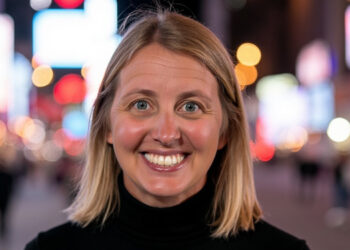Offering a variety of aquatics activities at your recreation center can help retain and attract new members of all ages. Whether a member is looking for swimming lessons, a therapeutic program or more advanced activities such as water sports, the following insights from three community recreation professionals can help spark new and creative aquatics programs to offer.
Scuba diving is a program gaining popularity among those interested in more advanced aquatics offerings. It can be an option at your pool through a partnership with an outside instructor. At the Sidney Albert Albany JCC in Albany, New York, the Try Diving program is offered at various times throughout the year with equipment supplied through a JCC contracted and certified professional diver.
“Scuba diving is open to anyone 10 years and older on a commitment-free basis,” said Amy Zick, the director of health and wellness at the Albany JCC. “All activities are done in the shallow end of the pool with certified lifeguards, and dive staff on deck and in the water with participants.”
The JCC Indianapolis also offers a scuba program, open to members and non-members alike. Nicole Hagemeyer, the director of aquatics, has known Indy Scuba owner Pat O’Brien for 10 years and appreciates the affordable prices and genuine instructing.
“O’Brien simply wants to share his love of scuba with as many people as possible, and as a fellow scuba diver, I certainly understand the feeling,” said Hagemeyer. “There is also Discover Scuba, a one-time option participants can try before committing to a full certification class.”
To reach the demographic seeking more therapeutic aquatics programs, the Indy JCC offers Arthritis Foundation classes, consisting of Aquajoints, Aqua Pilates and Fit Joints Plus, regularly drawing 20-plus participants. The JCC allows participants to try one of the Arthritis Foundation aqua classes for free before buying a pass.
“The Backer Therapy Pool is a marketing tool in and of itself,” described Hagemeyer. “With a hydraulic floor that allows the water’s depth to be adjusted as needed, it is one of the only pools of its kind in the Indianapolis area. The water temperature is also higher than in the regular competition pool, which is better for joint pain.”
If your facility is near larger bodies of water, aquatics program possibilities increase, especially water sports. The Camp Fitch YMCA — a branch of the YMCA of Youngstown in North Springfield, Pennsylvania — has an outdoor pool, a man-made pond and access to Lake Erie.
Camp Fitch’s most popular activities include stand-up paddle boarding, sea kayaking, waterskiing and banana boating. “If campers are hesitant to try our Lake Erie water sports, we encourage them to start at one of our other waterfronts with a calmer activity, such as canoeing in our pond or swimming in our pool,” said Tony DiMario, the summer program coordinator at Camp Fitch. “We explain the activity and all the equipment we use to ensure safety, requiring personal flotation devices for both lakes, no matter the level of swimming expertise. This ensures no kid will feel excluded or less than other swimmers.”
Even if your facility only has a pool, DiMario shared the programming his Y has experimented with are ideas you can implement too. “We always suggest group games and sports at the pool, such as basketball, volleyball or water polo,” he said. “These are all super easy to facilitate and the kids seem to love them.”
The Camp Fitch YMCA has also found success in a slackline program where staff set up an adventure slackline directly over the surface of the pool. “This is great for testing balance, and a cool and unique way to show off your water tricks at the pool,” added DiMario. “We also love to set up challenges and memory games to play in the pool, which is less of a water sport, but a great way to keep child engagement while swimming.”
When brainstorming ways to add new aquatics programming, Hagemeyer suggested looking at the competition around you to see if there is a need or want for a certain program in your area, then seek to fill that void.
“The Indy JCC has a large population of active older adults, so programs geared toward this group tend to do well,” said Hagemeyer. “At the same time, it is vital to have a wide range of programming so anyone who comes in can find something that suits them.”
Just as important as the programs you offer, Hagemeyer elaborated the benefits of a cost-benefit analysis, and suggested asking yourself the following questions: Do you have, or will you be able to, get the supplies you need? Who will teach the class or run the program? “You must be able to justify your expenditures and the program’s value, whether that be revenue generation or value to members if the class is free,” she said.
Lastly, never underestimate the power of networking. Getting to know people in the community can result in valuable working relationships, such as the partnership between the Indy JCC and Indy Scuba, or relationships with local healthcare providers for patient referrals to Arthritis Foundation classes.
“Doctors often refer their arthritis patients to the JCC’s aqua classes,” said Hagemeyer. “The patients have their own success stories with regard to regaining their mobility, and the longevity of aquatics staff has created a following of loyal participants, who in turn bring their friends.”
Brittany is the editor of Community Rec Magazine. Reach her at brittany@peakemedia.com.











